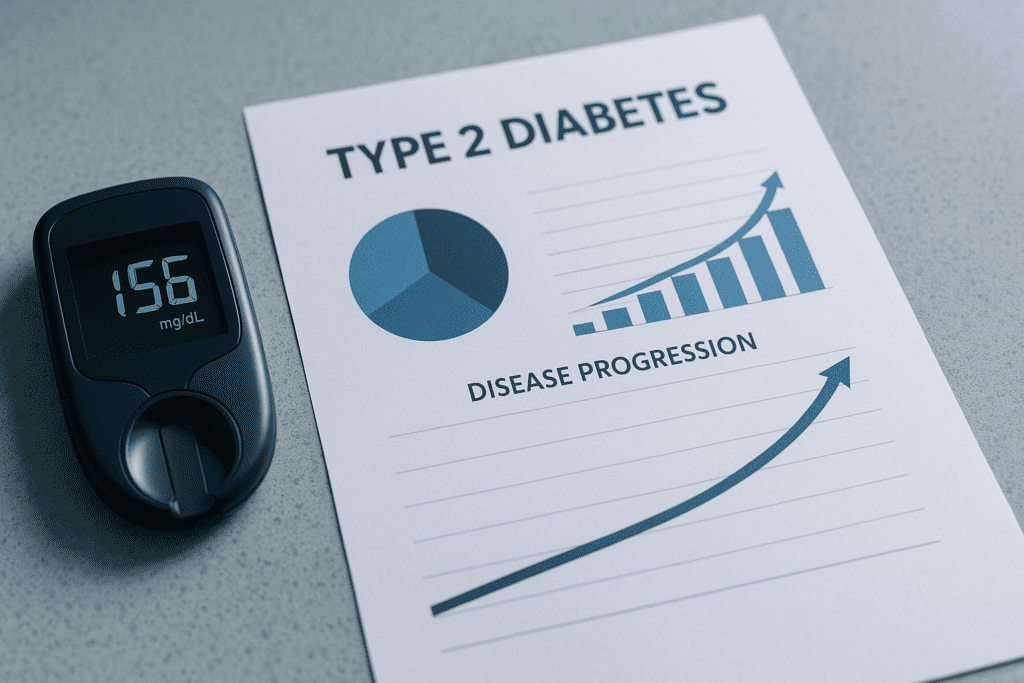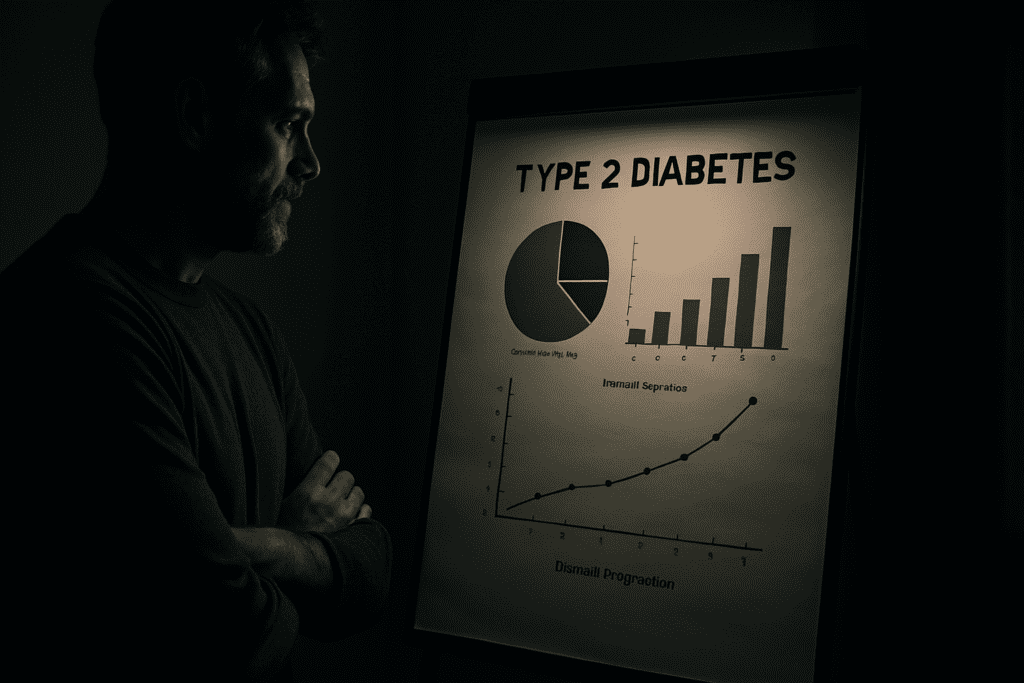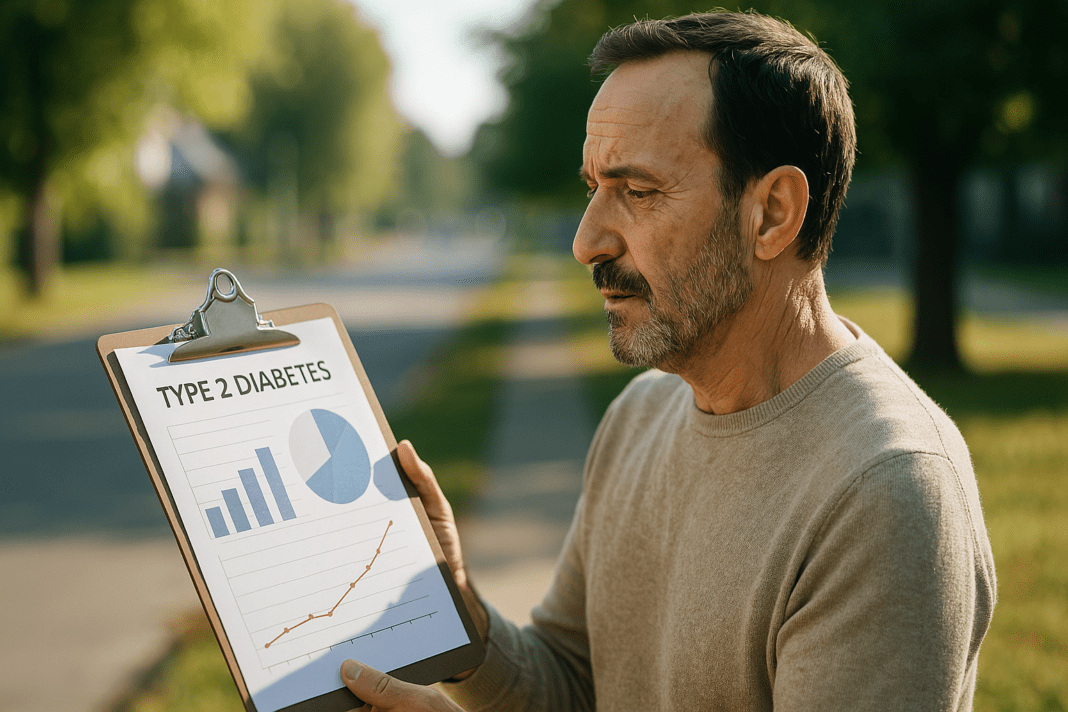Understanding the Role of Data in Diabetes Management
As type 2 diabetes continues to affect millions globally, the importance of accurate data representation has become increasingly clear. Tools like the type 2 diabetes chart, diabetes mellitus chart, and other diabetic charts are no longer confined to clinical walls—they’re now central to both research innovation and day-to-day patient management. These visual representations provide not just snapshots of glucose levels or insulin sensitivity but serve as essential indicators of disease progression, risk stratification, and long-term outcomes.
You may also like: Breakthroughs in Current Diabetes Research: What the Latest Studies Reveal About Treatment and Prevention
Modern medicine has grown more reliant on evidence-based metrics, and the diabetic community is no exception. A diabetes table or diabetes numbers chart can visually convey how lifestyle interventions, pharmacological treatments, or comorbidities influence blood glucose trends over time. As new therapies emerge and personalized medicine gains momentum, such charts are evolving into dynamic, interactive tools integrated with wearable technology and artificial intelligence. Understanding these developments helps both patients and clinicians optimize care strategies in real-time.
From Paper Records to Digital Dashboards: A Brief History of Diabetic Charts
The transformation of diabetic charts from static printouts to dynamic digital interfaces mirrors the technological evolution in healthcare. Historically, blood sugar tracking involved handwritten logs, basic line graphs, and standard diabetes tables used in clinics to explain insulin doses and dietary adjustments. These early tools were often linear, limited in scope, and challenging to interpret for those without a medical background.
With the rise of electronic health records and mobile health applications, type 2 diabetes charts have become more accessible, customizable, and responsive. Advanced platforms can now integrate real-time glucose readings from continuous glucose monitors (CGMs), automatically generate trends, and alert patients when their levels deviate from healthy ranges. These modern diabetic charts not only reduce human error but also empower patients with data literacy.
The availability of digitized diabetes mellitus charts has democratized access to medical insights. What once required a visit to an endocrinologist can now be reviewed on a smartphone. However, this shift also raises questions about digital health literacy and the potential for information overload. Thus, future charting systems must balance complexity with clarity to maintain clinical utility without alienating non-expert users.

Interpreting Diabetes Numbers: What the Charts Actually Tell Us
Interpreting a diabetes numbers chart requires a nuanced understanding of both absolute values and patterns. Fasting blood glucose, postprandial readings, HbA1c levels, and insulin dosages must all be contextualized within the patient’s lifestyle, medication plan, and comorbid conditions. For instance, a slightly elevated fasting glucose might not indicate disease progression if offset by stable A1c levels and well-controlled post-meal spikes.
One of the most valuable insights offered by a diabetes table is the relationship between short-term fluctuations and long-term control. Many patients experience daily variability due to stress, sleep, or physical activity. While these might not drastically shift their A1c values, trends over weeks or months reflected in type 2 diabetes charts can signal the effectiveness of treatment plans—or the need for adjustments.
Moreover, diabetic charts serve as a bridge between quantitative data and qualitative assessment. Physicians often use these visual tools to communicate complex physiological changes in a comprehensible format. This approach helps patients understand not only where they are but also where they might be headed if interventions are—or are not—implemented.
Glycemic Trends and Predictive Modeling in Type 2 Diabetes
Recent research has highlighted the power of diabetic charts as predictive instruments. By analyzing large datasets and employing machine learning algorithms, scientists can now use type 2 diabetes charts to forecast disease trajectories. These models assess how specific variables—such as age, BMI, and duration of diabetes—interact with glycemic data to predict complications like nephropathy, retinopathy, and cardiovascular disease.
The advent of predictive analytics also allows clinicians to stratify risk more effectively. A well-constructed diabetes mellitus chart can display clusters of high-risk patients who share common traits and responses to treatment. This approach facilitates personalized care pathways, directing more intensive interventions to those who need them most.
Furthermore, longitudinal diabetic charts help uncover previously overlooked correlations. For example, some studies have shown that variability in postprandial glucose, more than average glucose, correlates with endothelial dysfunction—a precursor to heart disease. Such findings reinforce the value of granular data tracking and challenge the reliance on single-point metrics.
The Role of Diabetic Charts in Personalized Treatment Planning
Modern diabetic management is increasingly personalized, and diabetic charts are a cornerstone of this approach. Whether used to titrate insulin, adjust metformin dosing, or refine dietary guidelines, these charts provide the actionable data needed to customize interventions. Rather than relying solely on population-based guidelines, clinicians can tailor treatment based on the patient’s unique glycemic profile.
Interactive type 2 diabetes charts integrated with wearable tech offer a real-time feedback loop. Patients can see how specific foods, exercises, or stressors affect their blood sugar almost immediately. This biofeedback fosters behavioral change and encourages adherence, especially when supported by data visualization that is intuitive and user-friendly.
Personalization also extends to patient education. A diabetes numbers chart can visually demonstrate the impact of missed medications or poor sleep on glucose levels. For patients with low health literacy, seeing a sharp spike on a chart may be more impactful than abstract numeric explanations. These insights are vital for shared decision-making and long-term engagement in self-care.

Clinical Implications of Visual Data in Diabetes Research
In the research setting, diabetes charts are invaluable for identifying clinical trends, testing hypotheses, and evaluating intervention efficacy. Clinical trials increasingly rely on diabetes mellitus charts to compare outcomes across cohorts and to visualize changes over time. These charts provide immediate visual confirmation of a therapy’s effectiveness or a warning sign of unintended consequences.
The ability to present data in a visual format enhances scientific communication. Researchers often find that a diabetes table or chart can succinctly summarize complex findings, making them more accessible to both peers and policy-makers. In systematic reviews and meta-analyses, aggregated diabetic charts can highlight overarching patterns that are not apparent in isolated studies.
Additionally, visual data has educational value beyond academia. Medical students, healthcare providers, and even public health officials can benefit from well-designed charts that summarize key insights about disease progression, risk management, and treatment adherence. This broad utility positions diabetic charts as central figures in translational medicine.
Challenges in Standardizing and Interpreting Diabetes Charts
Despite their utility, diabetic charts are not without limitations. One of the primary challenges lies in standardization. Different platforms, laboratories, and healthcare systems may use varying formats and reference ranges, making it difficult to compare charts across contexts. A fasting glucose level that appears normal on one diabetes numbers chart may be flagged as elevated on another.
This inconsistency can confuse patients and hinder collaborative care, especially for those navigating multiple healthcare providers. Standardizing chart formats, terminology, and metrics would go a long way toward improving continuity of care. Initiatives by organizations like the American Diabetes Association and the International Diabetes Federation aim to address this gap but have yet to achieve universal adoption.
Another challenge is data interpretation. Not all patients are equipped to understand complex graphs or identify meaningful trends. Even clinicians may draw different conclusions depending on their familiarity with digital tools or the specific variables being charted. As such, there is a growing need for training in data literacy for both providers and patients.
Future Directions: AI-Driven Diabetes Monitoring and Charting
The future of diabetes management is increasingly intertwined with artificial intelligence. AI-driven platforms can automatically generate type 2 diabetes charts, analyze patterns, and even suggest treatment adjustments. These tools have the potential to outperform traditional decision-making in terms of speed, accuracy, and personalization.
One promising area is the development of predictive diabetes tables that adjust in real time based on new data inputs. These charts can incorporate environmental factors like temperature and air quality, which are increasingly recognized as influencers of glycemic control. As more variables are integrated, the predictive power of these charts grows exponentially.
Another innovation is the use of natural language processing to explain chart data in layman’s terms. Rather than showing a line graph with numbers, a diabetic chart might include a brief summary: “Your average glucose this week was slightly elevated, possibly due to skipped meals or reduced activity.” This shift toward interpretive visualization enhances usability and bridges the gap between raw data and actionable insight.
AI can also flag discrepancies in data that may indicate device malfunctions, patient non-compliance, or emerging health threats. By incorporating layers of analysis that go beyond human capacity, these advanced charts serve as early warning systems and optimize treatment at every stage of disease progression.
Empowering Patients Through Data Visualization and Engagement
Ultimately, the true power of diabetic charts lies in their ability to engage and empower patients. When individuals understand their data, they are more likely to take ownership of their health. This empowerment goes beyond knowledge—it fuels motivation, accountability, and sustained behavior change.
Studies have shown that patients who use personalized type 2 diabetes charts are more likely to adhere to medications, attend follow-up appointments, and make informed lifestyle choices. The visual feedback provided by these tools acts as a constant reminder of both progress and areas needing improvement.
Furthermore, visual data fosters communication between patients and providers. Instead of vague descriptions of how they feel, patients can refer to specific glucose trends or chart entries. This shared language enhances diagnostic accuracy and strengthens therapeutic relationships.
The integration of diabetic charts into mobile health platforms, telemedicine, and community health programs also ensures broader access. Low-income or rural patients who once struggled with fragmented care can now benefit from real-time monitoring and digital coaching, leveling the playing field in diabetes management.

Frequently Asked Questions: Type 2 Diabetes Charts and Disease Progression
What makes a type 2 diabetes chart different from other visual health tools?
A type 2 diabetes chart is unique because it captures patterns over time rather than isolated snapshots of health data. Unlike single test results, this chart allows patients and clinicians to see fluctuations and trends in blood glucose, HbA1c, and sometimes even insulin resistance across weeks or months. The value lies in how it contextualizes lifestyle, diet, and medication responses, offering deeper insight than isolated metrics. For individuals managing diabetes at home, these charts function as a living timeline that adapts with every lifestyle shift or treatment update. In many cases, it’s this continuous monitoring that empowers more accurate, responsive decision-making than sporadic lab reports ever could.
Can a diabetes mellitus chart help detect other chronic conditions early?
Yes, a diabetes mellitus chart can often flag warning signs for comorbid conditions even before symptoms appear. Persistent elevations in glucose readings, despite adherence to medication, may point to insulin resistance from conditions like polycystic ovary syndrome or hormonal disruptions. Likewise, shifts in glycemic variability over time might correlate with early kidney or liver function decline. By studying the nuances within these diabetic charts, healthcare providers can explore underlying patterns that suggest metabolic syndrome, hypertension, or even cardiovascular risk. These charts, when examined alongside other data sources, serve as early diagnostic prompts that can drastically improve preventative care.
How are diabetes numbers charts used in behavioral therapy or counseling?
Diabetes numbers charts are powerful tools in the context of cognitive-behavioral therapy for chronic illness. These visuals help connect abstract numbers to daily behaviors—turning invisible patterns into visible motivation. Counselors and diabetes educators often use these charts to guide clients through the emotional and psychological triggers associated with glucose spikes or poor medication adherence. Seeing a direct correlation between emotional stress and rising blood sugar on a diabetes table can be a profound moment of realization for patients. Ultimately, integrating data from diabetic charts into therapy sessions enhances self-awareness and reinforces sustainable behavior change.
Are there cultural or socioeconomic considerations when designing diabetic charts?
Absolutely. The usability and impact of diabetic charts can vary significantly depending on cultural and socioeconomic factors. In communities where health literacy is low, overly complex charts may overwhelm or alienate patients. Visuals should be adapted with simplified icons, color coding, or even audio-enhanced features for populations with limited literacy. Additionally, a type 2 diabetes chart tailored for patients in lower-income regions may emphasize locally available food options or realistic lifestyle modifications. Ensuring that diabetes mellitus charts are culturally sensitive and contextually relevant increases engagement, reduces disparities, and ultimately improves health outcomes.
What are some emerging innovations in diabetes table design?
One of the most exciting innovations in diabetes table design is the integration of predictive analytics through machine learning. These advanced charts not only reflect current glucose trends but also anticipate future levels based on real-time inputs such as sleep, exercise, and even ambient temperature. Newer models now feature personalized baselines that adapt as the patient’s condition evolves, rather than using static reference ranges. Additionally, interactive diabetic charts can now link with nutrition tracking apps and fitness devices to create comprehensive health profiles. These innovations transform the diabetes numbers chart into an intelligent interface that supports truly dynamic, precision-based management.
How do diabetic charts influence family involvement in disease management?
Diabetic charts are often key in fostering collaborative care among family members. When a patient shares a digital type 2 diabetes chart with a caregiver or loved one, it opens the door to more constructive dialogue about support needs and daily routines. Caregivers can track patterns and provide reminders or assistance with meal planning, medication timing, or stress reduction. More importantly, a diabetes numbers chart can help family members recognize how their support—or lack thereof—impacts disease outcomes. This transparency can turn diabetes from an isolating experience into a shared journey, encouraging empathy and active participation.
Can a diabetes mellitus chart be used to compare the efficacy of different treatment approaches?
Yes, diabetes mellitus charts are extremely valuable for side-by-side treatment comparisons. For instance, if a patient switches from oral medications to insulin therapy, the chart can visually represent the resulting changes in glycemic control. Some digital platforms allow for annotation, making it easier to compare interventions like intermittent fasting, GLP-1 agonists, or exercise routines. Over time, a well-maintained diabetes table can reveal which approaches yield the most sustainable improvements, particularly when analyzed in tandem with weight, mood, and energy levels. This evidence-based visualization supports informed decision-making and helps avoid unnecessary medication changes.
What role do diabetes numbers charts play in managing diabetes during pregnancy?
During pregnancy, glycemic targets shift significantly, making diabetes numbers charts even more critical. In gestational diabetes or pre-existing type 2 diabetes, these charts must be updated frequently to reflect rapid hormonal changes and fetal growth demands. Obstetricians and endocrinologists often use specialized diabetic charts to track postprandial glucose, which becomes particularly important for fetal development. Unlike general diabetic charts, pregnancy-specific versions are designed to catch even minor deviations quickly to minimize risk to both mother and baby. Consistent use of these visual tools allows for agile treatment adjustments during this sensitive period.
How can public health initiatives benefit from analyzing aggregate diabetic charts?
Public health researchers often rely on aggregated diabetic charts to identify regional trends in disease prevalence, treatment adherence, and risk profiles. By compiling data from thousands of type 2 diabetes charts across diverse populations, policymakers can identify areas where interventions are needed most. For example, a cluster of elevated post-meal spikes across a city may prompt educational campaigns about high-carb diets or sugar-laden beverages. These aggregate diabetes tables become crucial for resource allocation, community outreach programs, and evidence-based policy design. They turn individual experiences into population-wide insights that guide systemic change.
What’s the psychological impact of regularly tracking your own diabetic chart?
While the intent of a diabetic chart is to inform and guide, its psychological impact can be complex. For some patients, daily tracking fosters a sense of empowerment and control, offering tangible proof of progress. For others, particularly those prone to anxiety or perfectionism, the chart may become a source of stress or guilt. The key is to frame the type 2 diabetes chart not as a scorecard but as a tool for learning and self-compassion. When paired with supportive care teams and realistic goal-setting, diabetes numbers charts can nurture a healthier emotional relationship with disease management.
Conclusion: The Transformative Power of Diabetes Charts in Modern Medicine
As type 2 diabetes continues to evolve as a global health challenge, the tools we use to monitor and manage it must evolve as well. Type 2 diabetes charts, diabetes mellitus charts, diabetic charts, and diabetes numbers charts are no longer mere record-keeping tools—they are dynamic instruments of precision medicine, patient empowerment, and clinical innovation.
By distilling vast amounts of data into accessible visual formats, these charts offer unparalleled insights into disease progression, treatment efficacy, and patient behavior. They have become integral to research, daily clinical practice, and personalized healthcare strategies. With continued advancements in AI, wearable technology, and health literacy, the potential for even more responsive and predictive charting systems is immense.
Yet, the ultimate value of these tools depends not just on their technological sophistication but on their capacity to communicate meaning, foster understanding, and inspire action. When leveraged effectively, diabetes tables and charts can do more than inform—they can transform lives. As we look to the future, the integration of these visual tools into every facet of diabetes care may prove to be one of the most significant advancements in the battle against this chronic disease.
blood sugar monitoring tools, glucose tracking apps, insulin resistance management, continuous glucose monitoring, personalized diabetes care, HbA1c trends, digital health records, wearable health tech, metabolic health data, predictive health analytics, diabetes risk factors, glycemic control strategies, remote diabetes care, patient engagement tools, data-driven chronic care, clinical decision support, mobile health technology, chronic disease dashboards, health data visualization, smart health monitoring
Further Reading:
Statistics and facts about type 2 diabetes
Urgent action needed as global diabetes cases increase four-fold over past decades
Association of risk factors with type 2 diabetes: A systematic review
Disclaimer
The information contained in this article is provided for general informational purposes only and is not intended to serve as medical, legal, or professional advice. While MedNewsPedia strives to present accurate, up-to-date, and reliable content, no warranty or guarantee, expressed or implied, is made regarding the completeness, accuracy, or adequacy of the information provided. Readers are strongly advised to seek the guidance of a qualified healthcare provider or other relevant professionals before acting on any information contained in this article. MedNewsPedia, its authors, editors, and contributors expressly disclaim any liability for any damages, losses, or consequences arising directly or indirectly from the use, interpretation, or reliance on any information presented herein. The views and opinions expressed in this article are those of the author(s) and do not necessarily reflect the official policies or positions of MedNewsPedia.


